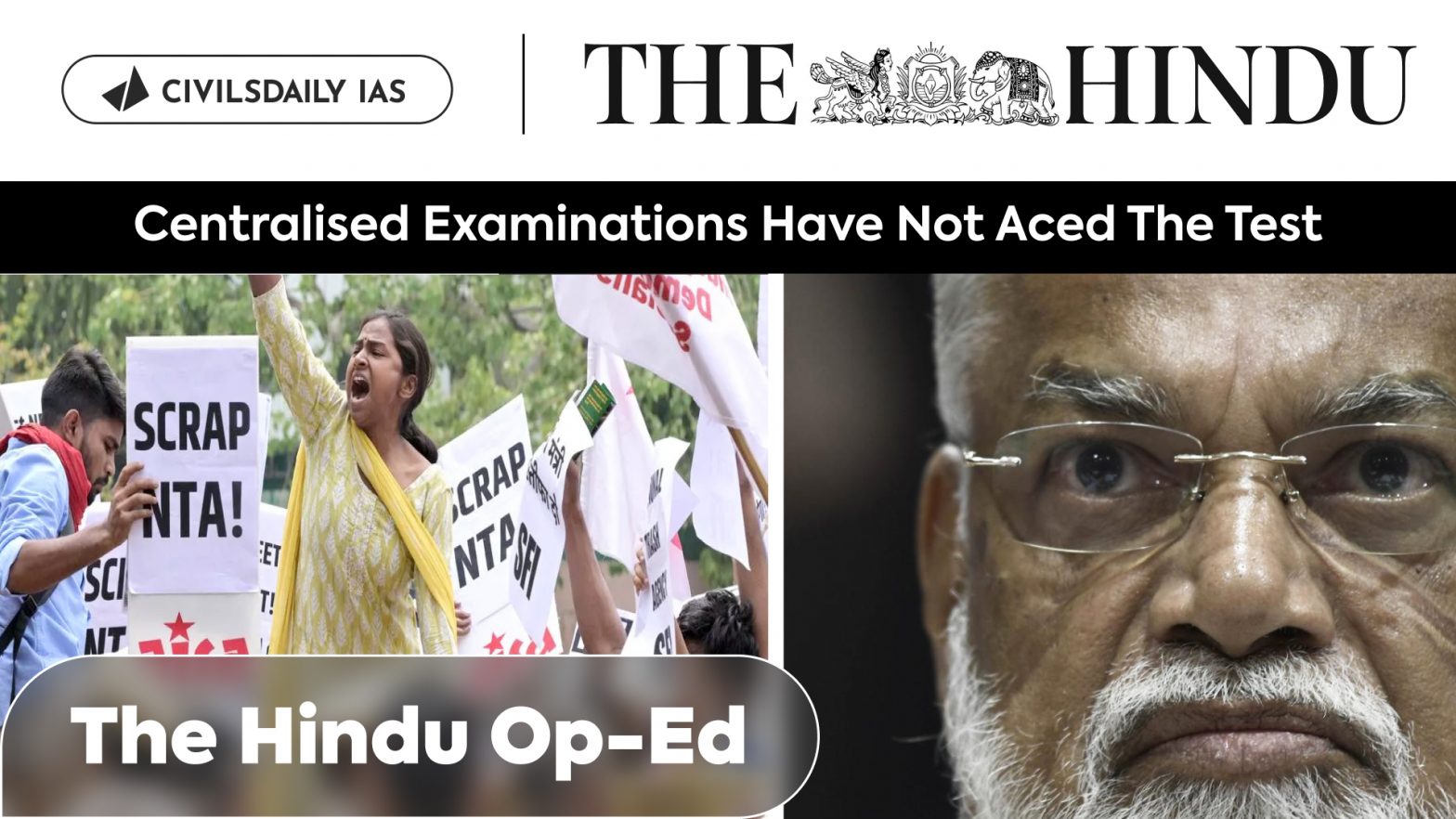| PYQ Relevance: Mains: Q1 National Education Policy 2020 conforms with the Sustainable Development Goal-4 (2030). It intends to restructure and reorient the education system in India. Critically examine the statement. (UPSC IAS/2020) Q2 The quality of higher education in India requires major improvement to make it internationally competitive. Do you think that the entry of foreign educational institutions would help improve the quality of technical and higher education in the country? Discuss. (UPSC IAS/2015) |
Note4Students:
Prelims: About NTA and its function
Mains: Challenges and issues related to NTA
Mentor comments: The National Testing Agency (NTA) has faced widespread protests from students across India over alleged irregularities in exams like NEET-UG, CSIR-UGC NET, and UGC-NET, including suspected question paper leaks and technical glitches. Students have demanded a re-examination of affected tests, a thorough investigation into the irregularities, and the scrapping of the NTA due to its lack of transparency and accountability. Prominent student organizations like ABVP, NSUI, AISA, and SFI have organized nationwide strikes, demonstrations, and protests outside the Ministry of Education headquarters, with some calling for the Education Minister’s resignation.
Let’s learn!
Why in the news?
The NTA faced severe criticism after awarding grace marks to 1,563 candidates in the NEET-UG exam due to delays at seven examination centres. This led to a record 67 candidates sharing the top rank, prompting allegations of inflated marks
About the National Testing Agency (NTA):
- The National Testing Agency (NTA) was established by the Government of India in 2017 to conduct entrance examinations for professional courses.
- It aimed to conduct Multiple Choice Question (MCQ)-type examinations electronically, utilizing specialists in the science of testing to set up question banks and evaluator frameworks.
- NTA conducts over 15 entrance exams, including the Common University Entrance Test (CUET), NEET-UG, and various UGC courses.
- It operates as a lean organization with most work outsourced and is headed by a chairman and a chief executive officer (typically an IAS officer).
Challenges and issues related to NTA:
- Lack of Transparency and Accountability:
- The NTA has been embroiled in allegations of irregularities in the conduct of exams like NEET-UG, including suspected question paper leaks, distribution of wrong question papers, and technical glitches.
- This has significantly dented the credibility and trust in the NTA among students, parents, and educators.
- Operational and Administrative Challenges: The centralized nature of the NTA has created operational and administrative challenges, with many of the empanelled test centers lacking proper infrastructure like CCTV monitoring.
- The award of grace marks to candidates and the unusual spike in the number of students securing full marks in exams like NEET have raised questions about the procedures adopted by the NTA.
- The continued use of traditional pen-and-paper mode exams creates multiple opportunities for malpractice, from the setting and printing of the paper to its distribution and delivery.
Steps taken by the Government:
- Institutional Initiatives:
- The government has appointed a reform Dr. K. Radhakrishnan committee, to recommend reforms to enhance the exam processes of the NTA.
- Govt. also appointed Pradeep Singh Kharola as the new chief of NTA.
- The education ministry has sought a detailed report from the Bihar Police’s Economic Offences Unit regarding the purported irregularities in the NEET (UG) 2024 exam held in Patna.
- Strengthening Security and Processes:
- The Govt. has recognized the need to strengthen the NTA’s security infrastructure, adopt advanced technologies, and enhance the overall efficiency and transparency of its examination processes.
- In response to the controversy over the award of grace marks, the NTA decided to retract the grace marks given to 1,563 students and offered them the option to take a re-test.
Impact on the School System due to entrance exam:
- Rise of Coaching Centers:
- The prominence of national-level entrance exams has shifted the focus from regular school education to specialized coaching centers designed to prepare students specifically for these exams.
- The proliferation of coaching centres has led to the emergence of ‘dummy’ schools where students are enrolled only to meet regulatory requirements but primarily attend coaching classes.
- Neglect of Holistic Education: The emphasis on entrance exams has led to the neglect of holistic education that schools traditionally provide, focusing instead on rote learning and exam-specific strategies.
- Declining Standards: The school system’s academic standards are declining as students and educators prioritize entrance exam preparation over comprehensive education.
- Students are missing out on foundational knowledge and skills that are critical for their overall development and future academic success.
Way forward:
- Holistic Evaluation:
- Reinstate the practice of incorporating school-leaving marks into the final entrance exam scores to ensure a more holistic evaluation of students.
- Emphasize the importance of school education by making it a significant component of the entrance examination process.
- Comprehensive Curriculum:
- Enhance the school curriculum to ensure it provides a strong foundation in various subjects, critical thinking, and problem-solving skills.
- Encourage a balanced approach to education that values both school learning and entrance exam preparation.

